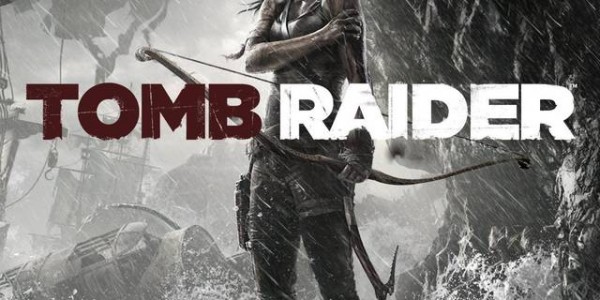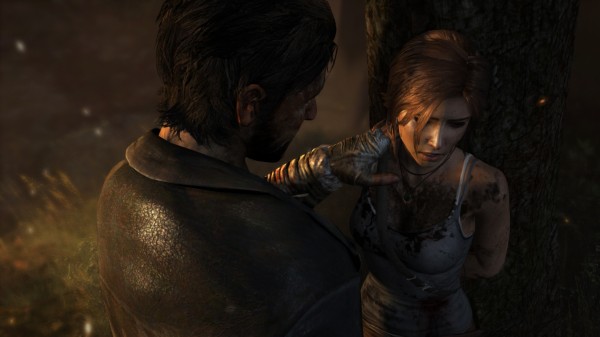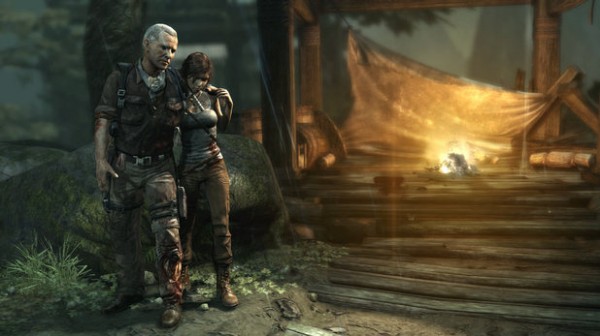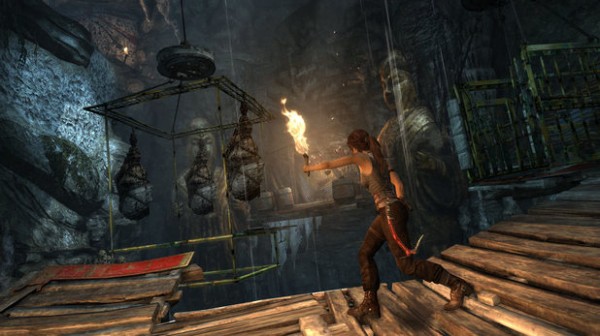Tomb Raider represents a transition for both Lara Croft and the entire series. The long-absent excitement that used to come with the Tomb Raider name has been released from its late-90s time capsule, and the famed female protagonist has undergone a startling transformation. By the end of her journey on the cryptic and mysterious island she’s been bloodied, battered, and bruised. More importantly, she dusts herself off and faces challenges head on. It’s not an immediate transformation, and the shift from innocent archeologist to revenge-fueled heroine has its problems, but as far as I’m concerned, this is a Lara Croft I can get behind.
Like many successful reboots, Tomb Raider goes back in order to help progress the series forward. The origin story follows Lara and a small group of friends/colleagues as they search for the lost Japanese kingdom of Yamatai. They find themselves shipwrecked on an island with all the answers, but the immediate danger of the inhabitants becomes the key concern in short time. The formulaic narrative has little concern for plot development, but this is a character-driven game first and foremost. We’re meant to see the change in Lara as she faces both physical and psychological torment. Does it go too far at times? I admit the unrelenting violence occasionally dips into the absurd, and I couldn’t help but cringe at one moment in the game in which Lara is repeatedly punched in the face, but perhaps the development team wants to elicit that reaction from me – I did in fact feel sympathy for this virtual character. Doesn’t that make the ensuing revenge that much sweeter?
The problem with the revenge mentality rests largely on timing. When should the hunted become the hunter, so to speak. Lara expresses regret after killing a deer in the early moments of the game, only to be shooting countless enemies with fire-soaked arrows and shotgun shells just hours later. This creates a narrative dissonance in which the Lara Croft from the beginning of the game becomes less believable as a result of her actions in the moments that follow. I admit it’s an almost impossible balance to find, especially since this is an action-adventure game we’re talking about – gunfights are to be expected! Nevertheless, the inconsistency still exists. But I do commend developer Crystal Dynamics for its bold attempt to help build a relationship between Lara and the player with an unflinching look at violence. By the end of the game I truly felt Lara Croft was a compelling and strong-willed protagonist, something I haven’t felt about her since… well, ever.
The juxtaposition between the two sides of Lara also manifests in a more mechanical sense. It felt like a survival aspect was being introduced to the core formula when the player must kill a deer and collect its meat in the beginning of the game. But that element is quickly abandoned, only to reappear again in the form of achievements/trophies. Imagine if Lara had to fight for food and survive the ominous island for quite a few hours, only to find human enemies standing in her way at a certain point. Maybe then the transformation would be slightly more convincing, but as it stands the combat amounts to a series of medium-to-large scale encounters with numerous enemies.
Luckily these encounters are enjoyable, thanks to the weapons at Lara’s disposal. I found them all rewarding to use, especially after a few handy upgrades. I fully decked out my bow by the end of the game – there’s just something about headshots with arrows that appeals to me. Skill points are also obtained throughout the game, which allows Lara to acquire useful abilities both in and outside of combat. Tomb Raider doesn’t only concern itself with shooting, though. Exploration of the island expands as Lara accesses new items throughout the adventure, each one allowing her to interact with the environment in a new way that opens previously inaccessible paths. Platforming sections also feature heavily in the game, and I found these quiet moments with no immediate danger to be just as compelling as the rest of Lara’s adventure, the wonderful visuals only serving to enhance those feelings, from the realistic lighting in caves to the detailed character design.
Despite the appearance of platforming sections, the Tomb Raider series is changing right alongside Lara Croft. Crystal Dynamics places a stronger emphasis on action in Tomb Raider, and the Uncharted-esque set pieces stand as evidence of the transition. Players will narrowly escape crumbling windowsills and burning buildings as the camera cinematically captures the spectacle of it all. On the opposite end of the spectrum, we have the puzzle-filled tombs which have been relegated to optional in the series reboot. There are also artifacts and documents to discover throughout the island environment – an optional, unobtrusive, yet still thematically well-integrated activity. Lara Croft feels less like an archeologist than ever, but I don’t mean to single this out as a travesty. The optional tombs are a lot of fun and I wish there were more of them, but I still found the action set pieces thrilling, just as I did in the Uncharted series, but with better balance.
I’m not sure the same amount of hope can be applied to Tomb Raider‘s online multiplayer. It has everything one would expect: numerous maps, different game types, unlockable weapons/attachments, etc. At the same time, it takes no risks, offers no tangible reason to come back, and feels completely out of place. I understand the need to create a lasting product, but lazily tacking on the same competitive multiplayer formula we’ve seen year after year should not be the solution.
But the biggest problem with the multiplayer – and it’s a problem that cannot be reconciled by anything other than the excellent single-player campaign – is that it excludes the biggest reason for Tomb Raider‘s success as a reboot: Lara Croft. The game takes this culturally relevant character, completely transforms her, and creates a dynamic and interesting protagonist who overcomes all kinds of disheartening obstacles. My mind ran through the emotional gamut as I experienced Lara’s journey off the island, and it’s a reaction I was not expecting to have. With just one game, developer Crystal Dynamics has managed to completely change my opinion of this famous character.
New life has been injected into the Tomb Raider franchise.





















